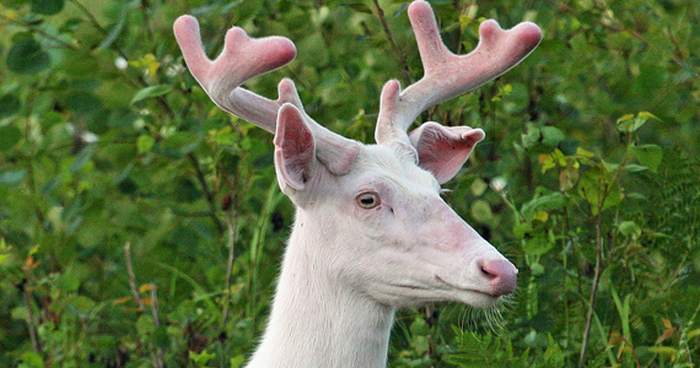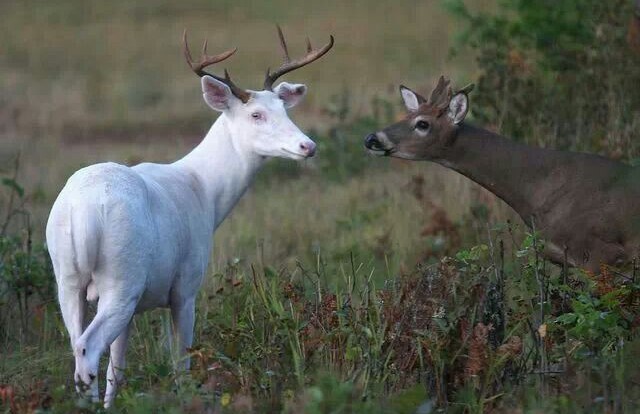Albino white-tailed deer may be neat to see, but did you know that a true albino occurs in only one of out of 100,000 births and very few fawns survive beyond the first year of life? It’s absolutely true. For an albino deer to live over just a few years in the wild is extremely unusual, almost unheard of. But if you think about the high mortality rate of these anomalies, it actually makes sense for a number of reasons. Unfortunately, these facts offer no comfort to an albino.
First, most of the whitetail’s range consists of habitat that is dominated by the colors green and brown—not white. The whitetail’s range includes the entire western-half of the US. Most of that area has a relatively long growing season, especially the south. Albino deer definitely have the odds in their favor during the winter season in snow-covered areas, but the deck is still stacked against them over the remainder of the year in most places.
VIDEO: Albino Buck in White County, illinois
Seeing an Albino: The Odds are Against You
Animal coloration is based on the process of natural selection within all wildlife species. The coloration best suited for survival becomes the dominant (normal) color within a species. There are always abnormalities within a species, but most are relatively small variations of the norm. Albino animals are quite the opposite. They stand out!
Color mutations occur infrequently overall in deer and other wildlife, but if those color variations were well-suited for the environment, then those “oddly” colored animals would survive to breed and pass on their genes. If genetics cause an animal to stick out, such as a white deer in a primarily green or brown environment, then the animal will be more noticeable to natural predators, including humans.

This results in the animal being depredated by a coyote or wolf, or possibly harvested by a hunter simply because it’s much easier to see. In either case, the color abnormality does not benefit the white animal. This increased level of mortality is Mother Nature’s way of saying “no.” There is no doubt that albino deer would have the upper hand in a perennial, snow-laden landscape.
In such a situation, albino deer would have the upper hand on both two and four-legged predators, the number of white-colored animals would increase and soon begin to comprise the majority of the breeding population.
True Albino or Just White?
The albino whitetail buck seen above is a true albino deer. In cases of true albinism, albino deer lack pigmentation in the hair, skin, and, in the case of deer, the iris of the eyes. However, eyes can be pink or blue and the hoofs a pale gray. In some areas, albino deer are even protected by law. In the state of Wisconsin, for example, white and albino deer are protected from hunting.
However, most states do not protect deer with color abnormalities. In addition, deer and other wildlife can be white in color without being albinos. Leucism is a partial loss of pigmentation, which can cause an animal to look white without the animal being an actual albino.

To sum up, albinos are interesting animals in general, and albino white-tailed deer, specifically, are really cool. Albino deer are genetic phenomenons that physically do not make sense, at least in most cases, within their natural environment. However, under certain environmental conditions, such as in areas where snow cover remains throughout the year, it would be the best thing going.
So although most of us will never see a wild albino deer, if you do, then just consider the odds, then consider yourself lucky. Next, go buy a lotto ticket!